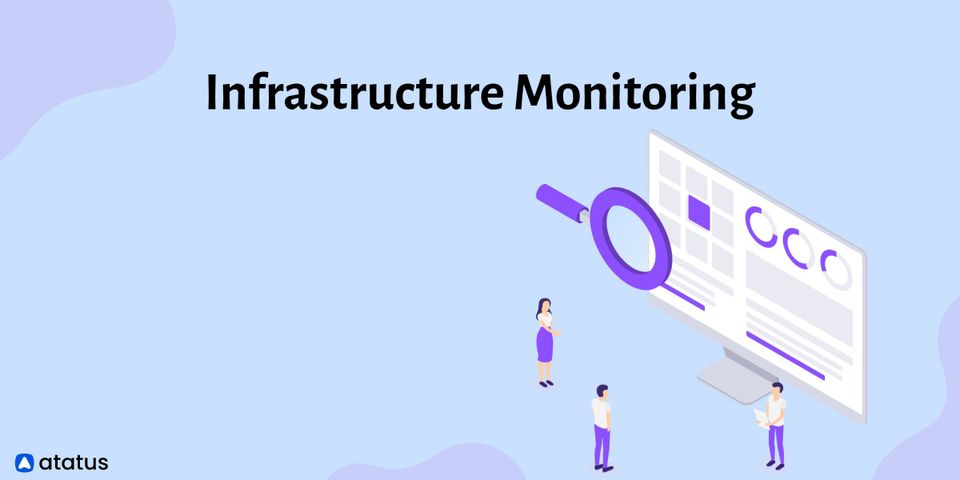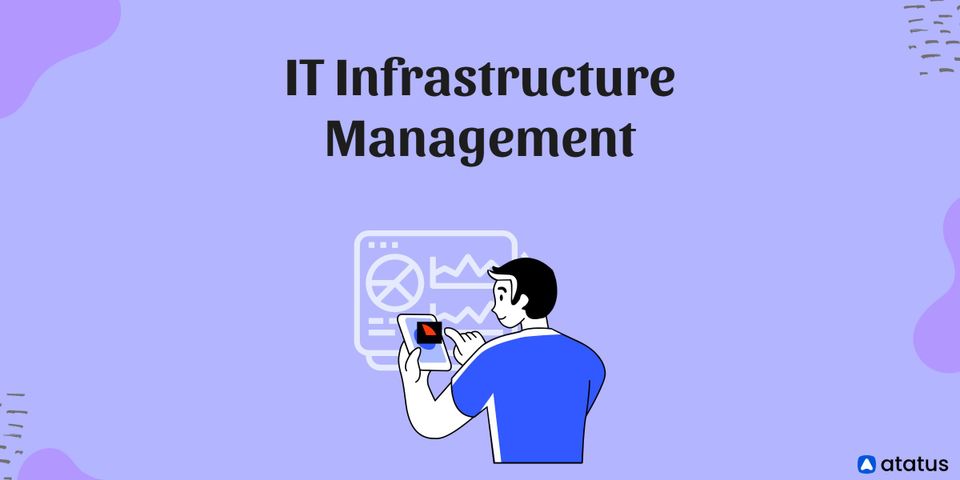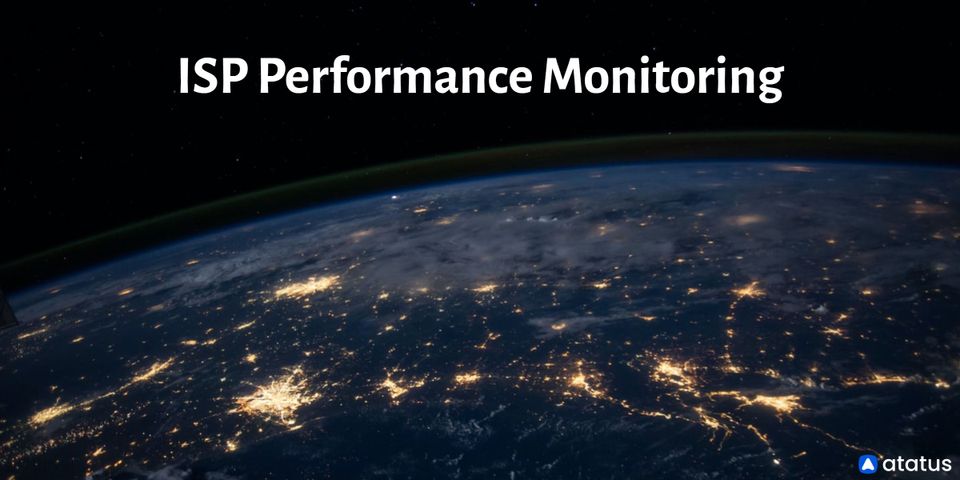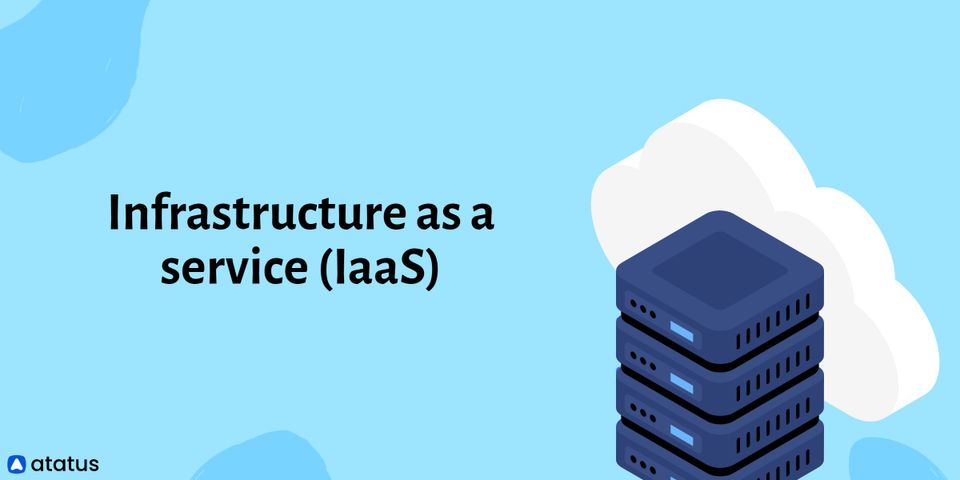IT is advancing at a faster rate. Maintaining efficient infrastructure monitoring and troubleshooting is more crucial than ever to stay up with architectural changes and hybrid environments. The development of distributed systems, which are made up of many components and services, adds to the complexity. IT teams must have the correct procedures and technologies in place to effectively manage to monitor modern infrastructure.
We will cover the following:
- What is Infrastructure Monitoring?
- How does Infrastructure Monitoring Work?
- Types of Infrastructure Monitoring
- Use Cases of Infrastructure Monitoring
- Benefits of Infrastructure Monitoring
- Challenges in Infrastructure Monitoring
What is Infrastructure Monitoring?
Infrastructure Monitoring is the process of identifying what's affecting system and application performance using data. It gathers data on the health and performance of servers, virtual machines, containers, databases, and other backend components of the tech stack. Engineers can use an infrastructure monitoring tool to visualize, analyse, and alert on metrics to see if a backend failure is affecting users.
Monitoring is critical not only for software operations but also for business outcomes and long-term objectives. When critical systems fail to work as expected, it can be damaging to business operations and have a negative influence on customers. IT teams should be notified when a server crashes, but best practices should go beyond that.
Monitoring, if properly configured, can aid in the proactive discovery of underlying issues, reducing reaction time and ensuring that customers are never affected. Infrastructure and operations professionals can drastically enhance outcomes for greater overall performance and profitability by integrating solutions that are simple to adopt and provide robust details down to individual dimensions.
How does Infrastructure Monitoring Work?
Infrastructure monitoring keeps track of hosts, containers, and other backend components' availability, performance, and resource usage. Engineers frequently install software on their hosts called an agent. Real servers, often known as bare metal servers, or virtual machines that leverage the resources of a physical server are examples of hosts. The agent gathers metrics from hosts and feeds them to a monitoring platform for analysis and visualization.
The insight provided by infrastructure monitoring into the health of the backend components that support your applications helps you ensure that critical services are available and performing properly for users.
Previously, businesses had to operate their own on-premise physical servers with set IP addresses. Engineers can spin up or replace servers on-demand in the cloud. The use of cloud infrastructure has fundamentally altered the way infrastructure monitoring is carried out. Engineers typically need to monitor ephemeral infrastructure components rather than static, individual hosts in such dynamic situations. They also require knowledge of important subsets of their infrastructure, such as hosts in a certain region.
Infrastructure monitoring gives visibility into the hardware, operating system (OS), and application server layers of the technology stack. The hardware layer includes the physical components that your backend components rely on to work, such as memory chips and processors. The operating system (OS) serves as a bridge between the hardware and application layers. It manages the host's CPU and other resources, offers a user interface, and runs the applications. The content generator for client applications and services is the application server.
Types of Infrastructure Monitoring
Admins and engineers frequently discuss whether to use an agent or agentless IT monitoring. Both approaches have advantages and disadvantages, and the most comprehensive strategy would combine the two.
#1 Agentless Monitoring
Agentless Monitoring is a common option that uses a variety of protocols to convey system data and statistics to the monitoring software, including SNMP, WMI, SSH, NetFlow, and others. Without the use of external agents, these built-in functionalities monitor and control infrastructure data.
Agentless monitoring features can be found in networking devices, servers, flow devices, storage devices, and virtual computers such as VMware and Hyper-V. A good infrastructure monitoring system can control agentless component pieces from a central location.
#2 Agent Monitoring
Agent-based monitoring is typically tailored to a particular platform. As a result, it can collect and analyse more data for the system with which it was designed to communicate.
While vendor-specific programming produces more detailed data, it is also proprietary, making it harder to transfer to a new platform without losing data. You'll need to make sure your monitoring system can handle them if any of the components in your infrastructure use agents.
Use Cases of Infrastructure Monitoring
Users can only benefit from an organization's applications and services if the underlying backend infrastructure is in good shape. Engineers can discover and avoid problems anywhere in the backend using infrastructure monitoring, reducing downtime and service degradation for customers.
Infrastructure monitoring is commonly used by operations teams, DevOps engineers, and site reliability engineers (SREs) to aid them:
- Forecast Backend Requirements
By looking at previous infrastructure measurements, companies may forecast future resource usage. For example, if specific hosts were under provisioned during a recent product launch, you can configure extra CPU and RAM in the future during similar events to relieve stress on critical systems and limit the risk of revenue-draining breakdowns. - Make the Most of Your Infrastructure
Infrastructure monitoring can also be utilized to save money in the long run. You can decommission some of your servers that are overprovisioned or idle, for example, and execute the corresponding workloads on fewer hosts. You can also balance your infrastructure utilization by routing requests from underserved hosts to overserved hosts. - Troubleshoot Performance Issues
Infrastructure monitoring is a typical practice for preventing outages from escalating. During an event, an infrastructure monitoring tool can reveal which hosts, containers, or other backend components failed or encountered latency. Engineers can discover which hosts or containers are to blame if an outage occurs. This aids teams in resolving support tickets and dealing with customer difficulties.
Benefits of Infrastructure Monitoring
A primary benefit of infrastructure monitoring is the ability to react to worst-case scenarios, saving time and money. As a result, infrastructure monitoring is at the core of the operation, and you'll get the following benefits:
- Boost Reliability
Using infrastructure monitoring will not only help you discover current issues but will also assist you in quickly resolving them. It will keep you out of trouble, boost reliability, and reduce end-user complaints. - Early Problem Detection
Infrastructure monitoring software can scan and monitor activity throughout your whole IT system in real-time. These monitoring tools collect data that gives you a detailed picture of everything that's going on inside each of your IT resources, allowing you to spot problems before they become a serious problems. - Prevent Network Outages
With infrastructure monitoring in place, you'll be able to access vital stats and data right away, allowing you to spot issues that could indicate a network attack or penetration. Your network managers will be able to respond quickly before the intruders are able to carry out their destructive deeds. - Plan an Appropriate Budget for Upgrades
Infrastructure monitoring enables you to anticipate performance issues and maintain a current inventory of all essential devices and services that will need to be replaced in the future. This will not only assist you in budgeting for the upgrade but also in preparing for any technical requirements and timelines that may be associated with it. - Recognize and Respond to Security Threats
Infrastructure monitoring gives you a detailed understanding of your IT infrastructure, allowing you to notice suspicious activity such as odd traffic spikes, strange devices, and so on. This gives you an easy approach to keep track of security issues, take proactive measures, and guarantee that any security-related concerns are avoided. - Increase ROI
IT monitoring can have a significant impact on your company's return on investment. It will enable your IT team to devote less effort to monitoring your IT systems and more time to providing value to end-users. - Notifications in Real-Time
One of the most important benefits of infrastructure monitoring is real-time alerting. They will not only notify you of the performance issue, but they will also make it simple for you to resolve it.
Challenges in Infrastructure Monitoring
The use of real-time and historical data for infrastructure troubleshooting is sometimes disregarded in monitoring. Continuing to rely on legacy procedures that solely focus on uptime rather than implementing methods that improve efficiency and performance will deepen the divide between IT and business leaders. Failure to develop solutions to improve systems and increase agility will eventually result in product or service degradation, affecting the entire organization.
Troubleshooting with more granular metrics, rather than just evaluating resource usages like CPU or memory utilization, will be an effective method for teams. All metrics should be accessible (without using the command line) and can be useful in monitoring and troubleshooting application health, performance, anomalies, and outages. A more comprehensive picture can help IT teams discover underlying issues before they cause downtime, reducing the need for ongoing firefighting.
Conclusion
Software must work flawlessly now more than ever, and your IT infrastructure should be considered strategically in the context of the end-user and company. Observability of performance throughout the IT stack is critical, and it can only be done by making sensible investments in infrastructure monitoring. This ensures that your company has a comprehensive view of performance and availability across its entire IT infrastructure.
Monitor Your Infrastructure with Atatus
Atatus provides complete visibility into your infrastructure, allowing you to analyze and manage business-critical performance issues. Correlating application metrics, logs, and traces can help you make better business decisions and troubleshoot issues faster. You'll be able to see how your servers or cloud instances are being used in real-time.
Monitor all of your hosts' major performance indicators, including CPU, memory, I/O, disks, network, and load averages, as well as trends for all your servers. You will provide actual business value throughout your server landscape by monitoring the health and performance of your services, hosts, containers, and resources that impact your business revenue.
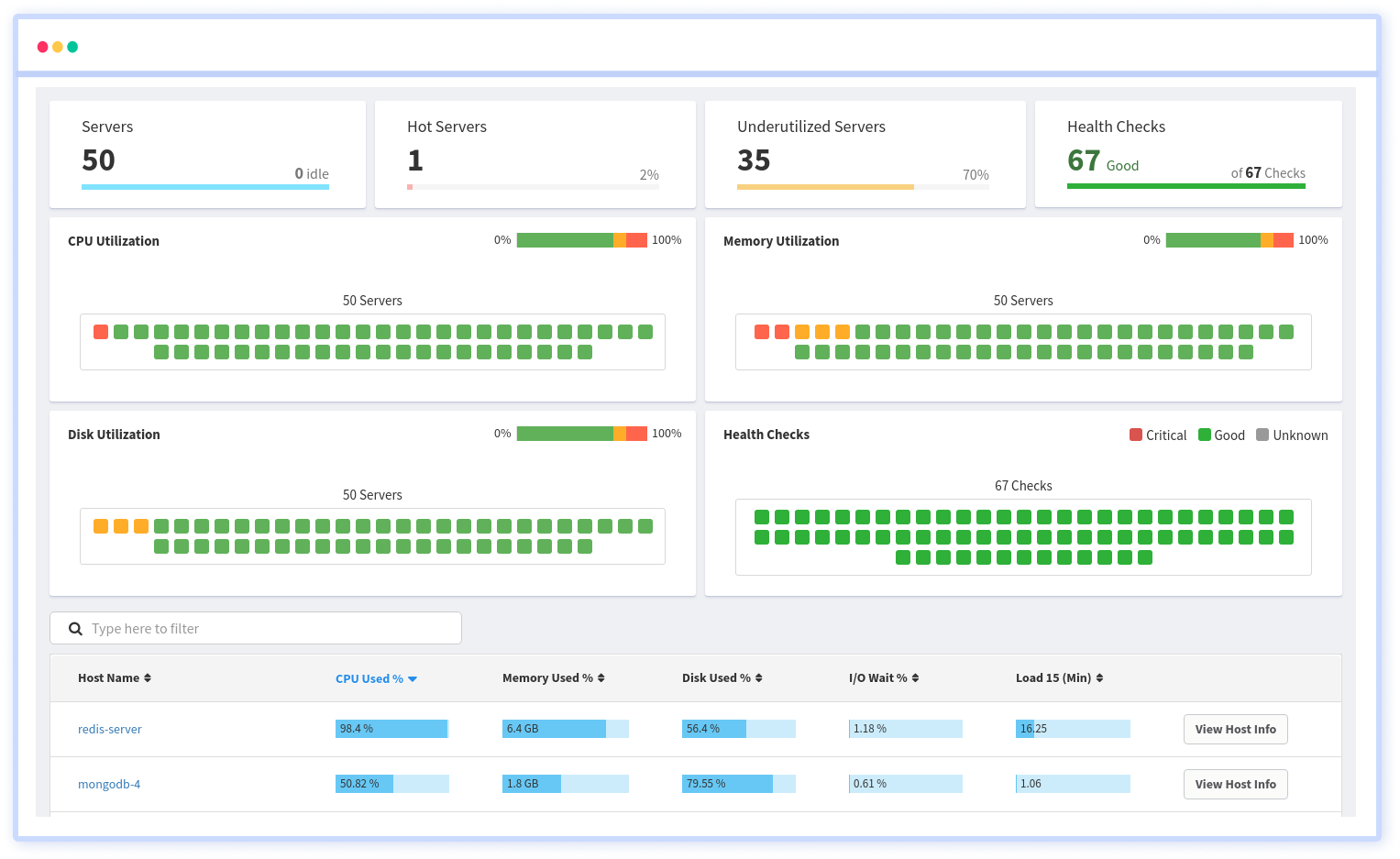
Atatus can be beneficial to your business, which provides a comprehensive view of your application, including how it works, where performance bottlenecks exist, which users are most impacted, and which errors break your code for your frontend, backend, and infrastructure.

